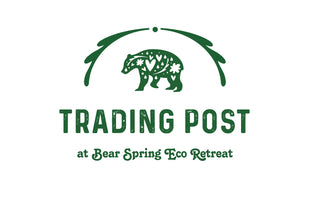Plastic Waste Policy Failures and Some Solutions

I can’t believe that it’s 2023 and we’re still so wasteful. We’ve endured another whole year of crazy heat waves, more species extinctions, fishery collapses, incredible flooding, atmospheric rivers, freezing rain, crop failures, rising food prices and some of us are still completely oblivious to the consequences of our human actions. I recently came across a blog promoting apple slices soaked in carbonated soda and then packaged in a plastic bag as a healthy snack. Yikes!
My initial reaction was to ask what was wrong with just eating an apple. It comes with its own packaging, a peel, that keeps it fresh and prevents the fruit from browning. And you can eat it. Zero waste!
Some readers became defensive. I was informed that people with jaw problems, braces and other dental appliances cannot bite into a whole apple. Yet there are literally hundreds of other types of fruit to choose from including bananas, pears, oranges and a variety of berries and sweet vegetables. Some are soft and even come with peels. I find it frustrating when the average healthy person defends those with physical limitations to justify their own wasteful consumption habits. Those with physical limitations are a minority. Of course, we don't want to create access problems for them. But, the blog wasn't written about that. Most of us can easily make the choice to use less plastic therefore ensuring that we can offer exceptions for those that need it most until we develop better solutions.
I’ve only discussed wasteful plastic packaging so far. The blogger also suggests soaking the apples in a carbonated soda such as 7-up. What?! That’s more packaging and you'll be consuming unhealthy sugar. The beverage industry is not only known for using large amounts of fresh water but are also known to be huge contributors of single use plastic waste. Although there has been some push to move the industry to glass bottle or compostable options, the increased cost has not made it widespread. It's best to avoid purchasing these products and if you must, demand that refillable options be more accessible.
Now, let’s get to Canada’s recent single use plastic ban that falls woefully short of taking any meaningful action on reducing waste. Minister of Health Jean-Yves Duclos said that they’re expecting “to avoid 1.3 million tonnes of plastic waste over the next ten years across Canada, leading to less pollution and healthier communities.” This sounds great until you realize that Canadians produce 3 millions tons of plastic waste per year. That’s 30 million tons over the next decade, IF we don’t increase consumption. This means that only about 3% per year of single use plastic will be diverted with this new policy.
In the next five years, single-use plastic production is projected to grow by 30 percent. This is fueling the contribution to global warming and ocean pollution. Single-use plastic is typically used once, but it needs hundreds of years to break down in landfills. And about 86 per cent of Canada’s plastic waste ends up in a landfill. The remaining five per cent of the plastic is burned to create energy, which causes serious emission problems or enters the environment as litter.
Let’s take a closer look at the actual policy and which single-use plastics are actually banned. The manufacture, import, export and sale of the following six categories of single-use plastics will be restricted starting with checkout bags, cutlery, straws, foodservice ware and stir sticks on December 20, 2022. A complete ban on most of these items is not coming until 2025. Here is a list with descriptions:
- checkout bags such as grocery store bags
- Cutlery including plastic knives, forks, spoons and chopsticks
- foodservice ware made from or containing “problematic plastics” such as expanded or extruded polystyrene, polyvinyl chloride, oxodegradeable plastic or black plastic.
- ring carriers
- stir sticks
- Straws
Exceptions will remain for straws. The policy permits the availability of single-use plastic straws in stores and health care facilities for people who need them for accessibility purposes. Because of this, the policy does not completely ban the manufacture or import of single-use straws, nor their sale under certain conditions.

Although, this policy is a shift in the right direction, what about the other 97% of plastic waste in Canada? Let’s consider, for example, food packing. A huge portion of our consumer plastic waste originates in the grocery store. Bread bags, produce bags, clams shells, plastic bags lined with foil (chips bags), meat packaging, paper bags and boxes with plastic windows, plastic security seals (yogurt or sour cream containers), plastic bottles, cans lined with plastic, plastic stickers on produce, plastic ties are all not part of this ban. Yet, there are many policies that could be enacted to limit this type of packaging. At the very least, there should be a complete ban on any plastic that is not easily recycled. Then we need to create policy that enforces better recycling practices and perhaps even developing a new culture around food access using reusable containers and bulk buying.
At our retreat, Bear Spring, we make every effort to reuse, recycle and repurpose as much as possible. We buy used before new and strive to reduce any waste. We actively try to make it as easy as possible for our guests to recycle and compost all their waste. We have added a fridge (reducing the need for plastic packaged ice), cooking area with BBQ, fire pit, dishes and utensils in an effort to help our guests reduce their single use food packaging. We have been expanding our gardening to offer a selection of fresh herbs, vegetables and fruits to our guests further reducing overall waste. Because we’re in a rural location we do not have regular waste pickup. We are 100% responsible for managing it all ourselves and for our guests. Finally, I am very pleased to report that at least 50% of our guests are local residents. This is ideal. Staycations are far more environmentally friendly. No air travel required. As a guest, you don’t even need to purchase any new equipment. Our glamping retreat provides everything you need, beds, bedding, cooking facilities and more to enjoy an outdoor experience in comfort without any waste.
On a personal level, I don’t buy any packaged food unless it can be recycled or composted. For example, I only buy field cucumbers and bulk mushrooms. I reuse bread bags to store vegetables in the fridge instead of saran wrap. I even reuse those cardboard containers that berries come in to pick my own from the garden. I save them all. Of course, we grow lots of our own food too. When ordering takeout, I provide containers for restaurants to put my order in. I never leave home without my water bottle and thermal coffee cup. If I do buy new, I choose natural materials and quality and make every effort to take care of those items so they last for years. I purchase cotton bedding only and hang dry all laundry. Not only does it reduce energy consumption but it also ensures the materials last longer. Plus, who doesn’t love the smell of line dried sheets? I do this for all our guest bedding too.
We are all reliant on fossil fuels to some extent. But my point is that we should be making every effort to reduce that reliance. Defending packaging apples in plastic when it already comes in a peel seems very misguided to me. Even the fact that grocery stores are not banned from doing the same is a huge policy failure. It’s this kind of waste that I have been trying to reduce for years now. I understand that some people have physical limitations that require exceptions until better options are available but, for the vast majority of us, this is easy stuff. The benefits of reducing our plastic consumption will most definitely out way the costs.

Leave a comment